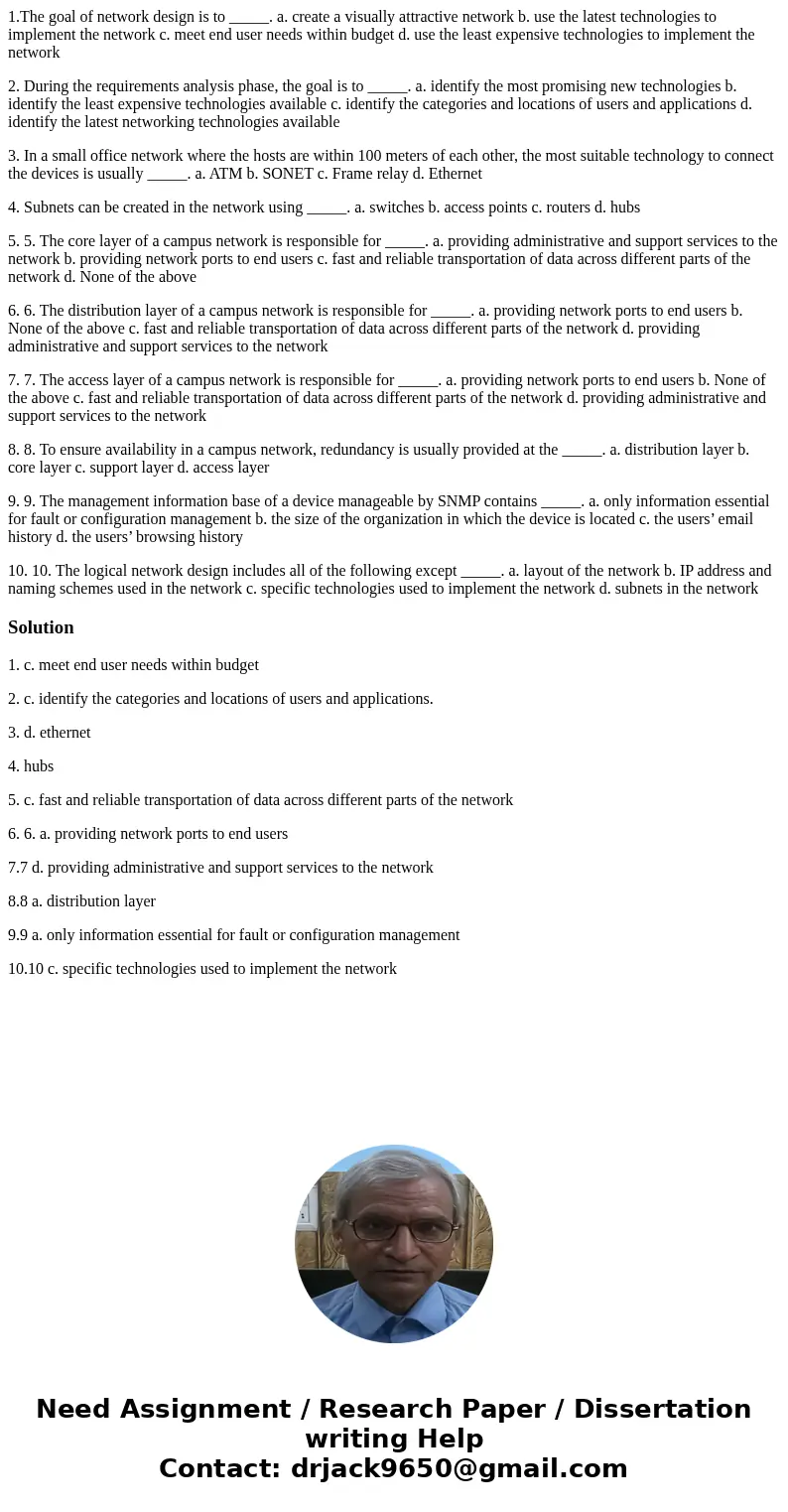1The goal of network design is to a create a visually attra
1.The goal of network design is to _____. a. create a visually attractive network b. use the latest technologies to implement the network c. meet end user needs within budget d. use the least expensive technologies to implement the network
2. During the requirements analysis phase, the goal is to _____. a. identify the most promising new technologies b. identify the least expensive technologies available c. identify the categories and locations of users and applications d. identify the latest networking technologies available
3. In a small office network where the hosts are within 100 meters of each other, the most suitable technology to connect the devices is usually _____. a. ATM b. SONET c. Frame relay d. Ethernet
4. Subnets can be created in the network using _____. a. switches b. access points c. routers d. hubs
5. 5. The core layer of a campus network is responsible for _____. a. providing administrative and support services to the network b. providing network ports to end users c. fast and reliable transportation of data across different parts of the network d. None of the above
6. 6. The distribution layer of a campus network is responsible for _____. a. providing network ports to end users b. None of the above c. fast and reliable transportation of data across different parts of the network d. providing administrative and support services to the network
7. 7. The access layer of a campus network is responsible for _____. a. providing network ports to end users b. None of the above c. fast and reliable transportation of data across different parts of the network d. providing administrative and support services to the network
8. 8. To ensure availability in a campus network, redundancy is usually provided at the _____. a. distribution layer b. core layer c. support layer d. access layer
9. 9. The management information base of a device manageable by SNMP contains _____. a. only information essential for fault or configuration management b. the size of the organization in which the device is located c. the users’ email history d. the users’ browsing history
10. 10. The logical network design includes all of the following except _____. a. layout of the network b. IP address and naming schemes used in the network c. specific technologies used to implement the network d. subnets in the network
Solution
1. c. meet end user needs within budget
2. c. identify the categories and locations of users and applications.
3. d. ethernet
4. hubs
5. c. fast and reliable transportation of data across different parts of the network
6. 6. a. providing network ports to end users
7.7 d. providing administrative and support services to the network
8.8 a. distribution layer
9.9 a. only information essential for fault or configuration management
10.10 c. specific technologies used to implement the network

 Homework Sourse
Homework Sourse